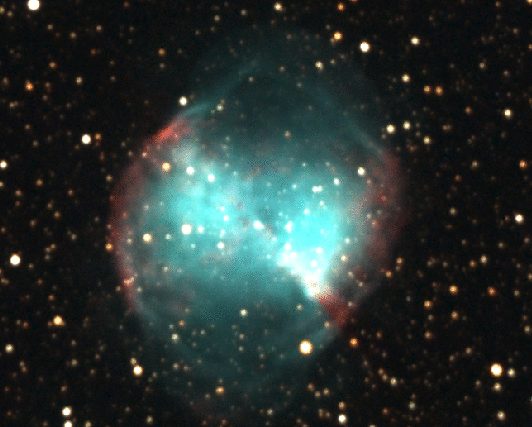Starblinker
Supernova search tool © 2016 Marco Lorrai
Starblinker
Starblinker allows you to easily search for new stars in your astronomical photos. If you find a new star in your image, keep in mind that it could be a defect in your photo, like a hot pixel, or: 1) An already known or a new unknown asteroid;
2) An already known or a new unknown comet;
3) An already known or a new unknown galactic nova;
4) If it is superimposed to an external galaxy, an already known or a new unknown supernova;
Before reporting a potential new discovery, please make all necessary checks to be sure it is not an already known object or a defect in your image.
Features
 Starblinker asks you to insert two images, your fresh image and an older, reference image. After this step, the program will search how to match the stars in the two images.
The program can rotate and mirror the images, and works even if the scale or the field of the images is not the same (but they have to be not much different).
Then, after few seconds, you should see the two images blinking, and this should allow you to easily search for new features in your image.
You can choose the blink time, and enlarge o decrease the size of the images in the screen.
Starblinker asks you to insert two images, your fresh image and an older, reference image. After this step, the program will search how to match the stars in the two images.
The program can rotate and mirror the images, and works even if the scale or the field of the images is not the same (but they have to be not much different).
Then, after few seconds, you should see the two images blinking, and this should allow you to easily search for new features in your image.
You can choose the blink time, and enlarge o decrease the size of the images in the screen.New features in version 2.0:
1) Automatic creation of an animated gif;
2) Draw a mark on an area, to highlight something interesting;
3) A better alignment if the two fields aren't exactly linear (different scales for the center and the borders of the images). For example, this may happen using a coma corrector or a focal reducer with your photos. Use the command "Refine alignment";
4) Automatic search for new features ("Analyse"). Be sure your images are perfectly aligned (if not, see the third point!). Beware, this may also raise lots of false alarms.
Practise with Starblinker
 Starblinker is a very useful tool to search for variable stars. Get these three images of M27 taken in different years and find out 3 variable stars!
Starblinker is a very useful tool to search for variable stars. Get these three images of M27 taken in different years and find out 3 variable stars!M 27 - image 1
M 27 - image 2
M 27 - image 3
Download
 If you find the software useful, please make a donation. It can help the author to improve the software. Even a small amount like 1 € is fine.
If you find the software useful, please make a donation. It can help the author to improve the software. Even a small amount like 1 € is fine.Donate with Paypal

Compiling starblinker on Ubuntu:
1) Install qt5 development library: sudo apt-get install qtdeclarative5-dev qt5-qmake;
2) Install opencv dev: sudo apt-get install libopencv-dev;
3) Install imagemagick (in order to create animated gif): sudo apt-get install imagemagick;
4) Make sure you system can execute the right qmake command fot qt5, or find the correct path;
5) Then, in the base source directory of starblinker, type: qmake;make;make install.
6) Launch the application with the command starblinker.
Current version: 2.0
Browse the sourceforge repository to download the application:
https://sourceforge.net/projects/starblinker/files
If you don't have any image to try with the application, download these:
M 81 - image 1
M 81 - image 2
License terms: This program is free software: you can redistribute it and/or modify it under the terms of the GNU General Public License as published by the Free Software Foundation, either version 3 of the License, or (at your option) any later version. This program is distributed in the hope that it will be useful, but WITHOUT ANY WARRANTY; without even the implied warranty of MERCHANTABILITY or FITNESS FOR A PARTICULAR PURPOSE. See the GNU General Public License for more details. You should have received a copy of the GNU General Public License along with this program. If not, see http://www.gnu.org/licenses.
Contact

About the author
This website and the software contained in it is written by Marco Lorrai. Keen on astronomy, I have also written the application wxcamNews
11-22-2016 Version 2.0 released 09-13-2015
Version 1.0 released